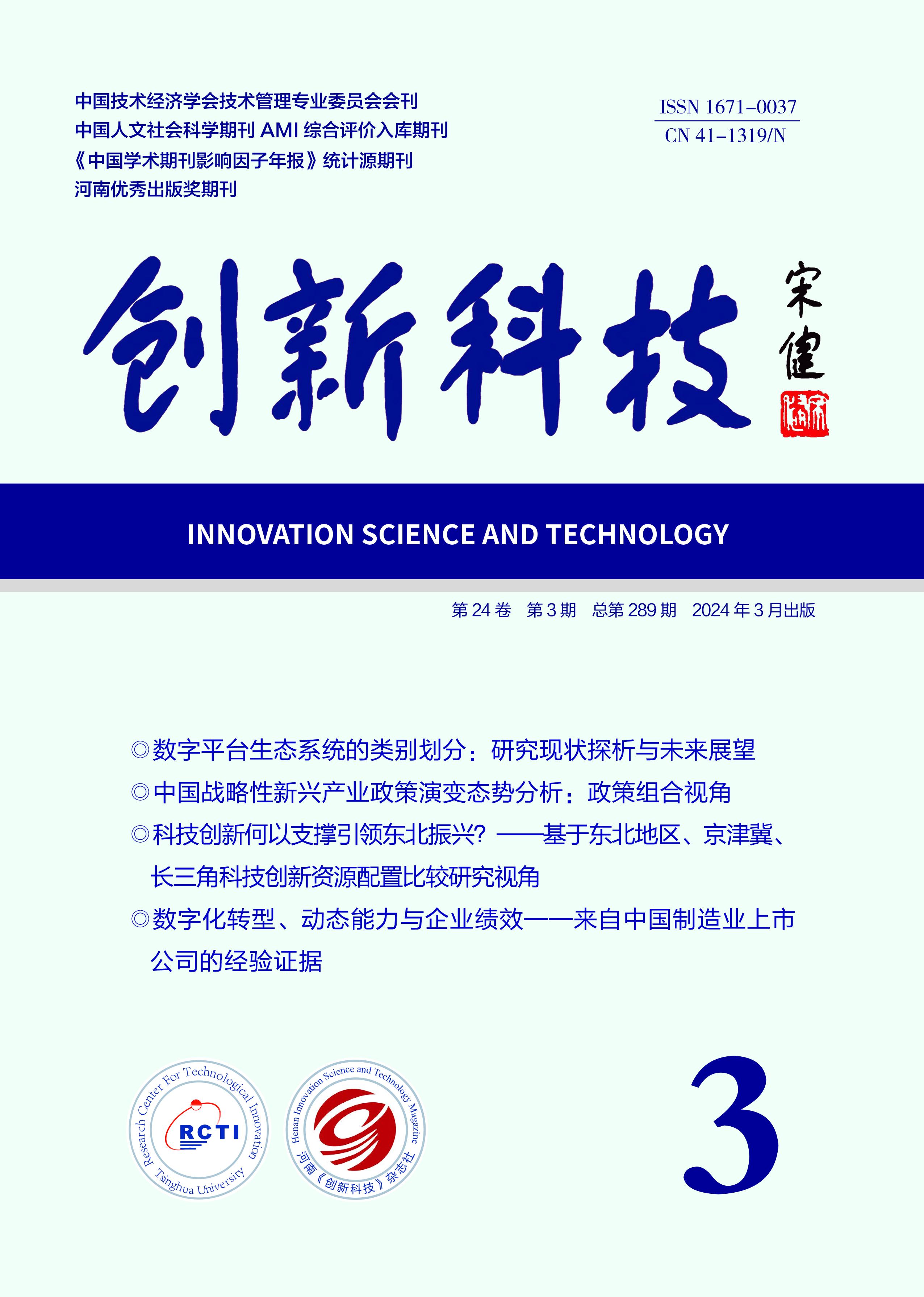INNOVATION SCIENCE AND TECHNOLOGY
Quick Search

All publication are peer-review
Peer review will take the from of double-blind review Judge objectively and impartially
There is no conflict of interest for the reviewer
Review articles shall be kept strictly confidential prior to publication
Science & Technology Strategy and Policy
Policy Deployment Analysis of New R&D Institutions in China Based on Policy Diffusion Theory
Jia Xiaofeng1 , Cheng Qing2 , Wang Liufang2 , Hu Zhimin2
(1.China National Health Development Research Center, Beijing 100044, China; 2.School of Health Policy and Management, Chinese Academy of Medical Sciences & Peking Union Medical College, Beijing 100730, China)
Abstract: To explore the characteristics of related policies for new R&D institutions in China, this paper takes the relevant policies of new R&D institutions promulgated by the central and lo‐ cal governments of China from 1996 to 2022 as the research object, adopts the theory and method of policy diffusion, constructs a policy analysis framework from the aspects of diffusion time, space, direction, intensity, breadth and speed, and makes a quantitative analysis of rel‐ evant policies. This research underscores several key findings: firstly, the deployment of policies related to new R&D institutions in China began in 2006, and the increase trend was accelerated in 2014 and 2019, and it is still in a period of rapid growth. Secondly, 21 central departments and 30 provinces (autonomous regions and municipalities directly under the central government) in China have issued policies related to new R&D institutions. The policy system in the eastern and central provinces such as Jiangsu, Shandong, Guangdong, Hubei, and other provinces is rela‐ tively complete, while the relevant policies in the Yangtze River Delta, Pearl River Delta, and the middle reaches of the Yangtze River are clustered. Thirdly, the relevant policies show two diffusion directions: top-down diffusion and parallel diffusion. In the early stage (1996—2014), the central government did not issue relevant policies, and parallel diffusion among local govern‐ ment agencies was the main diffusion during this period. Since 2014, a series of policy docu‐ ments have been issued by local government agencies under the guidance of the central govern‐ ment policy., the diffusion was mainly from the top to the bottom at this time. Ultimately, The 2019 Guidance on Promoting the Development of New R&D Institutions is the core policy, and the relevant policies around its implementation were spread throughout the country within three years. The research shows that the new R&D institutions in China is in a period of vigorous de‐ velopment, and the relevant policies of the central government have been preliminarily im‐ proved. The relevant policies of local governments are still being optimized and adjusted, and the number will continue to increase. The policy system of new R&D institutions has experi‐ enced the period of practical exploration of the institutional mechanism of local new independent research institutes from 1996 to 2005, the period of exploration and construction of new R&D in‐ stitutions from 2006 to 2013, and the period of relatively standardized exploration and develop‐ ment of new R&D institutions from 2014 to now, and has realized the gradual development from "what to build" to "how to build" and then to "how to build well". In this process, a relatively complete new R&D institution policy system has been formed from point to plane, from top to bottom. In the future, the central government needs to strengthen the top-level design, continue to issue relevant policy documents to promote the construction of high-level new R&D institu‐ tions, and the focus of its policy deployment should gradually shift from promotion layout to qual‐ ity and efficiency improvement. The central government can issue regional targeting policy and measures for the central and western regions to strengthen policy guidance and support for new R&D institutions in the central and western regions, so as to promote the balanced distribution of new R&D institutions in China. The parallel diffusion path based on demonstration effect should be strengthened, and the horizontal learning and interaction between local governments should be strengthened to promote the acceleration of the diffusion of local experience.
Key words: new R&D institution(NRDI); policy diffusion; policy text measurement